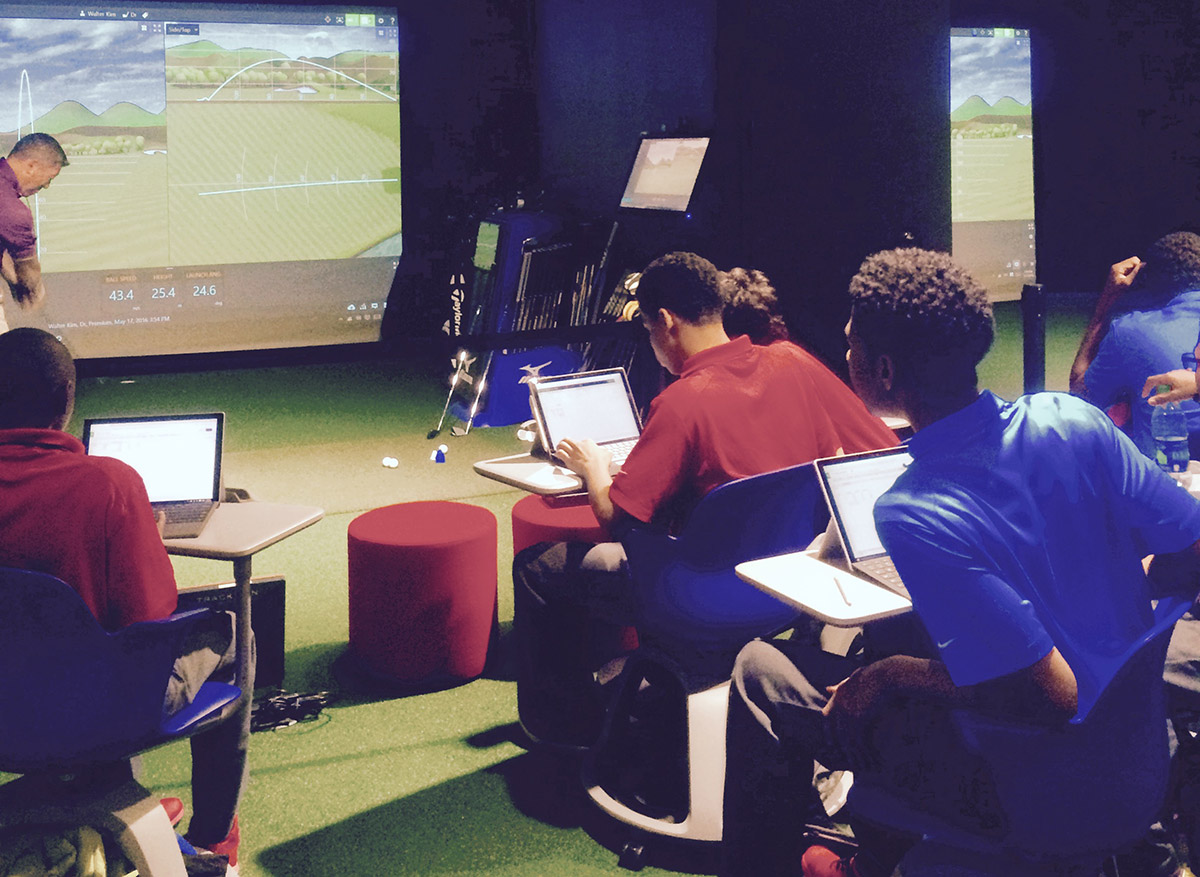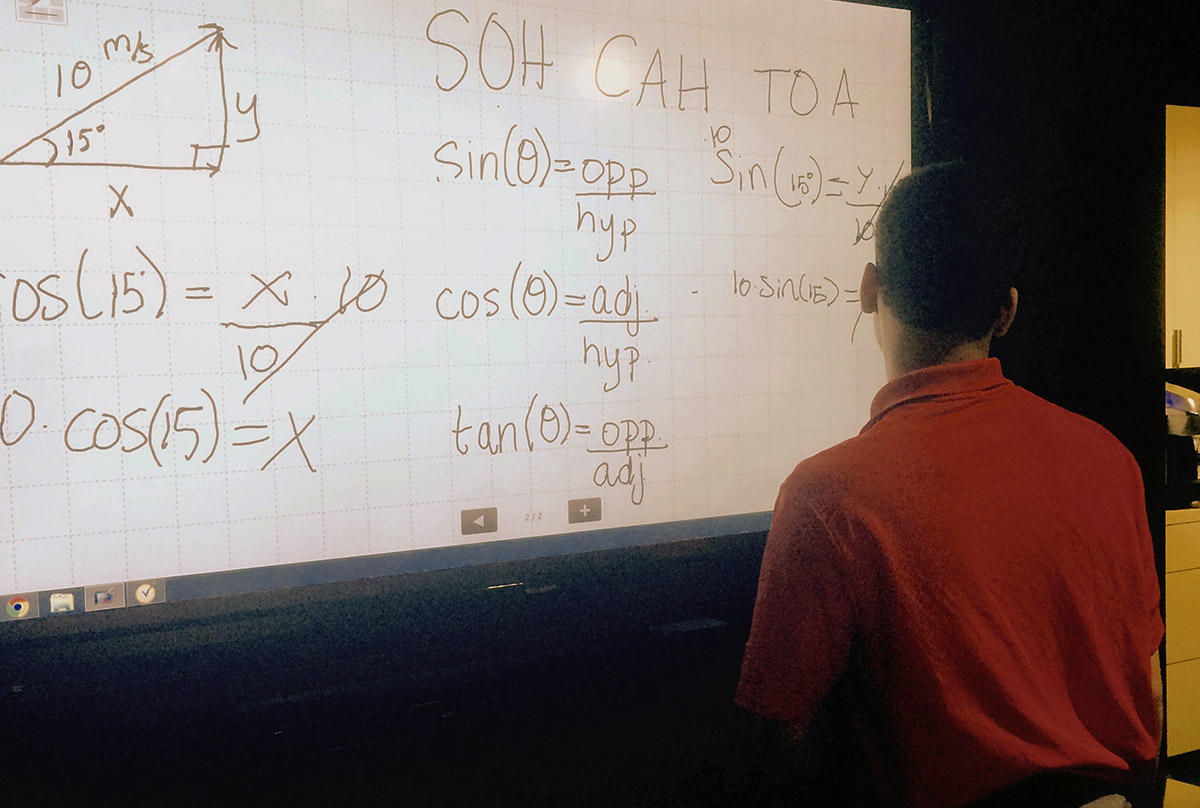By Veeshan Narinesingh, STEM program leader

Teaching Professional Walter Kim and our students used a TrackMan simulator to capture data for their calculations.
To wrap up the year, our young men will be channeling their inner filmmakers to share their knowledge of classical mechanics with the world.
As we have seen throughout the year, classical mechanics are everywhere in golf. When a low-lofted club like a driver strikes a ball, most of the energy goes to driving the ball forward. When a high-lofted club like a wedge strikes a ball, most of the energy goes to lifting the ball into the air. On the greens, shaggy grass makes for increased friction and slower rolls. Conversely, tightly-mowed greens are faster because they have less friction. These are just a few examples of the many ways in which classical mechanics and golf intersect.
Our young men’s knowledge of these physical laws gives them an understanding of the game that few golfers have. Our end-of-year web miniseries — written, programmed, produced and edited by our students — will give in-depth explanations of these concepts of physics and mathematics.
This week in our STEM sessions, our budding filmmakers are in pre-production, revisiting some past concepts in new ways using the technology at our Learning Center. They are fortifying their understanding of energy, friction, and kinematics while using new tools, such as trigonometry.
In one experiment, our student-athletes used our TrackMan simulators and Surface Pro Tablets to analyze the ball’s energy after being hit with an 8-iron. First, the students and Teaching Professional Walter Kim hit shots. Then they looked at parameters captured by TrackMan such as ball speed, rotation rate, moment of inertia, and maximum height to calculate and compare the ball’s kinetic and potential energies.
After a trigonometry lesson from STEM Co-Teacher Tiffani Kolozian, they used launch angle and overall ball speed to calculate the ball’s initial velocities in both the horizontal and vertical directions.
Seeking a more complete explanation? Keep an eye out for our video series, coming soon to our YouTube channel.
